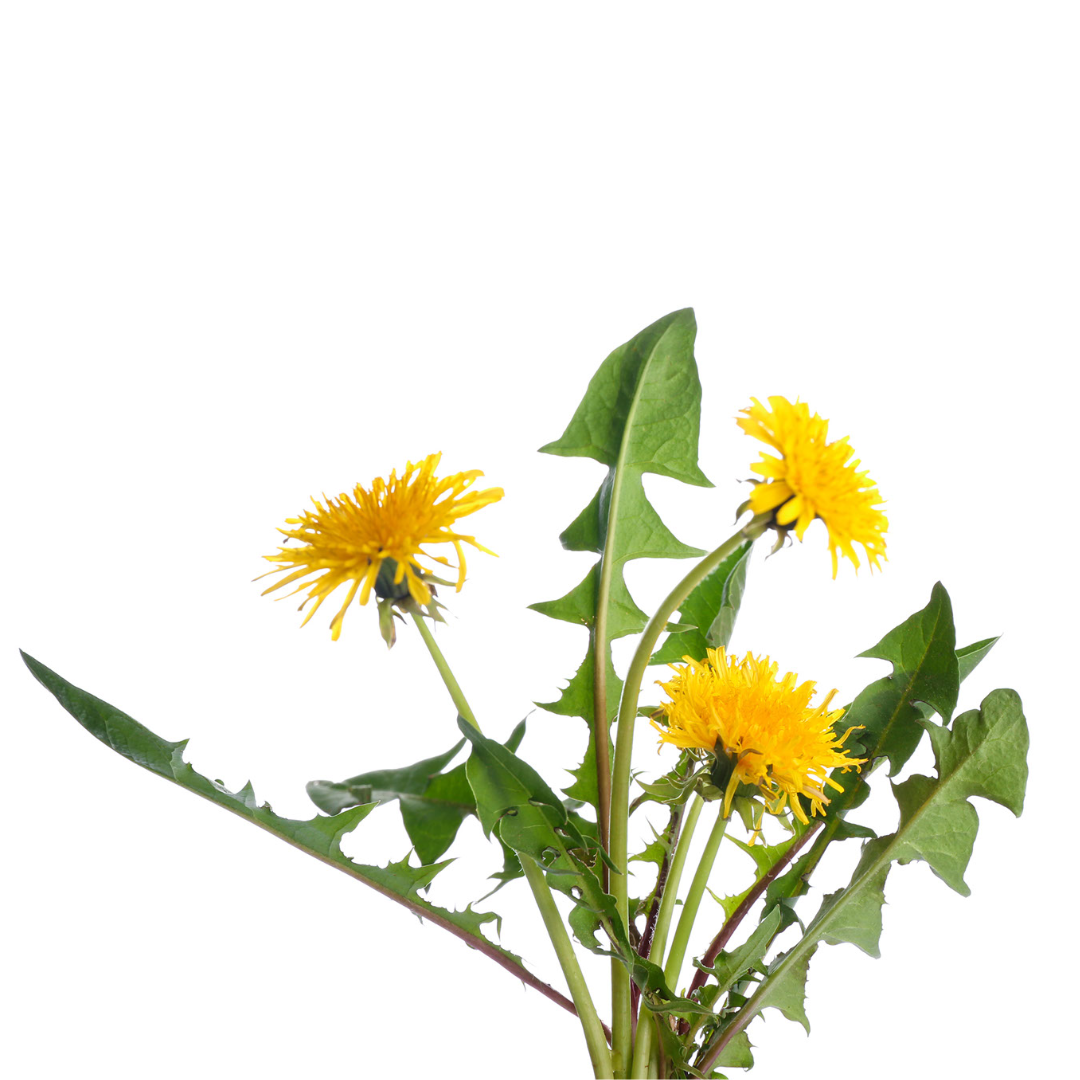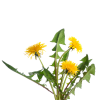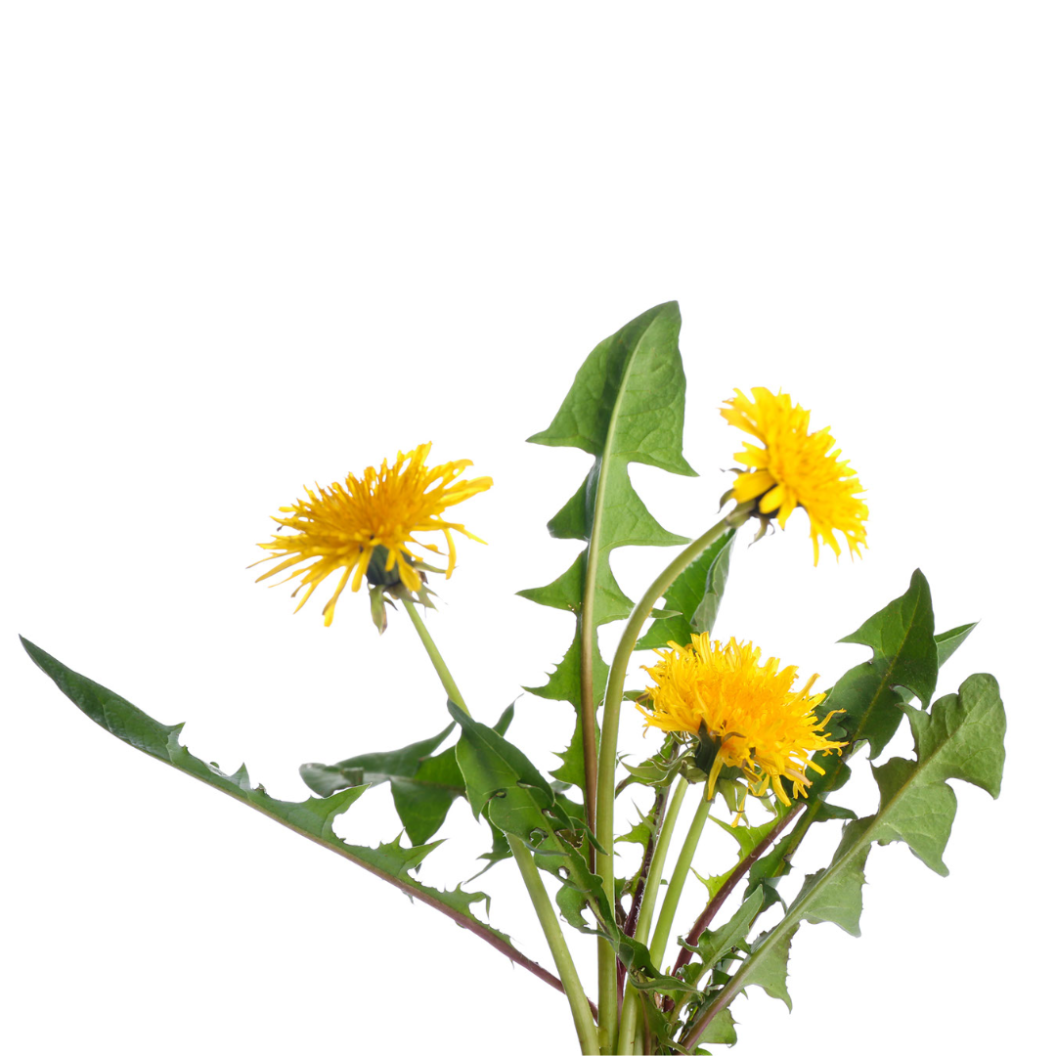





Dandelion
DESCRIPTION: Dandelions are probably the most famous (or infamous) weed in North America. They are very common and when their yellow flowers produce fluffy white seed heads children often blow them and make a wish. You can find Dandelions growing almost anywhere there is sunlight and water. They are most commonly found in fields, meadows, and lawns. The dandelion is a very hardy plant that can survive a wide range of environments, which is why they are so common.
SCIENTIFIC NAME: Taraxacum officinale
OTHER NAMES: Blowball, Lion's Tooth, Puffball, Cankerwort, Milk-Witch, Wild Endive, and Irish Daisy
LEAF TYPE: Broadleaf
FLOWERS: The flowers are bright yellow and look like little suns. They are made up of many small petals that come together to form a round shape that's about the same size as a quarter. The petals will be slightly pointed at the tips and curve backwards, giving the flower a bit of a spikey appearance. In the center of the flower, there's a small tube that sticks up like a straw, and it's surrounded by dozens of tiny, fluffy, white hairs that form a ball or globe shape. The ball of fluffy seed heads is what turns into the familiar white puffball that we blow on to make a wish.
LEAVES: The leaves are long and thin, with jagged, saw-like edges that make them look a bit like teeth. They grow in a rosette pattern close to the ground and can be several inches long. They are usually bright green in color, but can sometimes have a bit of a reddish tinge to them. If you crush the leaves they have a bitter smell. When the leaves are mature they will look somewhat ragged and worn.
LIFE CYCLE: Perennial
HOW TO IDENTIFY: The dandelion is arguably the easiest weed to identify. Its easily recognizable by its bright yellow flowers that turn into white puffballs.
MECHANICAL CONTROL RECOMMENDATIONS:
1. Hand pulling - More Info
2. Digging - More Info
3. Hoeing - More Info
4. Weed Pulling Tools - More Info
5. Lawn Mowing - More Info
6. Mulching - More Info
7. Turf Renovation - More Info
8. Flame Weeding - More Info
9. Manual Edging - More Info
It's essential to remember that mechanical control alone may not entirely eliminate Poa annua, especially in areas where the grass is actively managed, like golf courses and sports fields. Combining mechanical methods with chemical control and cultural practices can offer more effective long-term management. Always follow best practices and local regulations when using herbicides or pesticides. For large-scale control efforts, it's a good idea to consult with a professional turfgrass manager or horticulturist.
CHEMISTRY RECOMMENDATIONS:
"Pre-emergent herbicides:
Prodiamine: Prodiamine is a popular pre-emergent herbicide that is effective against a wide range of broadleaf and grassy weeds, including dandelions. It forms a barrier in the soil that prevents weed seeds from germinating. It's commonly found in lawn care products.
Dithiopyr: Dithiopyr is another pre-emergent herbicide that works by inhibiting cell division in germinating weed seeds. It offers control against dandelions and other common lawn weeds. It's often used in both pre-emergent and early post-emergent applications.
Pendimethalin: Pendimethalin is a pre-emergent herbicide that forms a barrier on the soil surface, preventing weed seeds from emerging and establishing. It can provide effective control against dandelions when applied at the appropriate time.
Isoxaben: Isoxaben is a pre-emergent herbicide that primarily targets broadleaf weeds. It inhibits cell wall formation in germinating seeds, leading to their suppression. It can be used to prevent dandelion growth.
Benefin: Benefin is a pre-emergent herbicide used to control various annual grassy and broadleaf weeds, including dandelions. It's often found in combination with other herbicides for broader-spectrum control.
Trifluralin: Trifluralin is a pre-emergent herbicide that works by inhibiting cell division in emerging weed seedlings. It's effective against a range of weeds, including dandelions.
Oxadiazon: Oxadiazon is a pre-emergent herbicide used in both ornamental and turf settings. It can provide control against dandelions and other annual weeds.
Post-emergent herbicides:
2,4-D: 2,4-D is a selective herbicide that targets broadleaf weeds like dandelions. It's commonly found in many lawn weed control products. It's important to note that while 2,4-D can effectively control dandelions, it should be used carefully to avoid harming desirable plants.
Dicamba: Dicamba is another selective herbicide that targets broadleaf weeds. It can be used to control dandelions in lawns, but like 2,4-D, it should be used with caution to prevent damage to non-target plants.
MCPA: MCPA is a post-emergent herbicide that is effective against a variety of broadleaf weeds, including dandelions. It's often used in lawn care products and can provide control when applied according to the label instructions.
Glyphosate: Glyphosate is a non-selective herbicide that can kill a wide range of plants, including dandelions. It's commonly used in areas where you want to completely clear vegetation, such as driveways or non-lawn areas.
Clopyralid: Clopyralid is a post-emergent herbicide that specifically targets broadleaf weeds like dandelions. It's often used in turf and ornamental settings.
Carfentrazone: Carfentrazone is a post-emergent herbicide that works quickly to desiccate and kill broadleaf weeds, including dandelions. It's commonly found in combination products for weed control.
Quinclorac: Quinclorac is a selective herbicide that targets a range of broadleaf weeds, including dandelions. It's often used in lawns and can provide effective control when applied properly.
Sulfentrazone: Sulfentrazone is a post-emergent herbicide that can be used to control dandelions and other broadleaf weeds. It's often used in combination products for weed control.
Selective herbicides:
2,4-D: 2,4-D is one of the most widely used selective herbicides for controlling broadleaf weeds, including dandelions, in lawns. It's effective against many types of broadleaf plants while being relatively safe for grasses when used as directed.
MCPA: MCPA is another selective herbicide that targets broadleaf weeds, including dandelions. It's often used in combination with other herbicides in lawn care products.
Dicamba: Dicamba is effective against a variety of broadleaf weeds, including dandelions. It's used in selective herbicide formulations for lawn applications.
Clopyralid: Clopyralid is known for its effectiveness against certain tough broadleaf weeds, including dandelions. It's often used in turf and ornamental settings.
Triclopyr: Triclopyr is a selective herbicide that targets a wide range of broadleaf weeds, including dandelions. It's commonly used in lawn and turf management.
Fluroxypyr: Fluroxypyr is a selective herbicide that can provide control over dandelions and other broadleaf weeds. It's often found in combination products for lawn weed control.
Quinclorac: Quinclorac is effective against many broadleaf weeds, including dandelions, and is used in lawn care products.
Aminopyralid: Aminopyralid is used to control broadleaf weeds in various settings, including lawns. It's known for its long-lasting effects.
Sulfentrazone: Sulfentrazone is a selective herbicide effective against certain broadleaf weeds, including dandelions. It's often used in combination with other herbicides for a broader spectrum of control.
Non-Selective herbicides:
Glyphosate: Glyphosate is one of the most well-known non-selective herbicides. It's effective against a broad spectrum of plants, including dandelions. Glyphosate works by inhibiting a specific enzyme required for plant growth. It's often used for total vegetation control in areas like driveways, walkways, and non-lawn spaces.
Glufosinate: Glufosinate is another non-selective herbicide that affects the same enzyme targeted by glyphosate. It's used to control various weeds, including dandelions, and is commonly used in non-crop areas.
Diquat: Diquat is a non-selective herbicide that disrupts plant cell membranes, leading to rapid desiccation and death of treated plants. It's often used for aquatic weed control and in non-crop areas.
Paraquat: Paraquat is a non-selective herbicide that damages plant cells upon contact, leading to rapid tissue death. It's commonly used for non-selective weed control in various settings.
Imazapyr: Imazapyr is effective against a wide range of weeds and woody plants. It's often used in areas where total vegetation control is desired, such as industrial sites and utility right-of-ways.
Oryzalin: Oryzalin is a non-selective herbicide that prevents cell division in plants, leading to their death. It's often used in non-crop areas and is also effective against certain grassy weeds.
Pelargonic Acid: Also known as nonanoic acid, this non-selective herbicide causes rapid desiccation of plant tissues. It's often used in organic gardening and for spot treatment.
Triclopyr (High Concentration): While triclopyr is commonly used as a selective herbicide, high concentrations of triclopyr can act as a non-selective herbicide, effectively controlling a wide range of plants, including dandelions.
Recommended Prevention
Recommended Control

